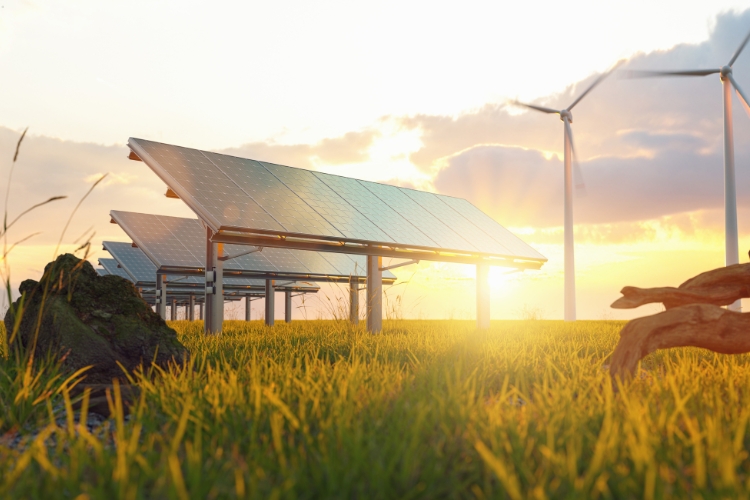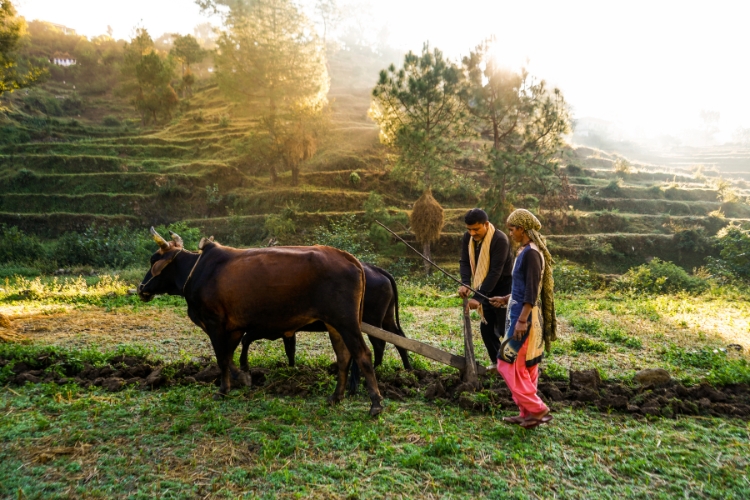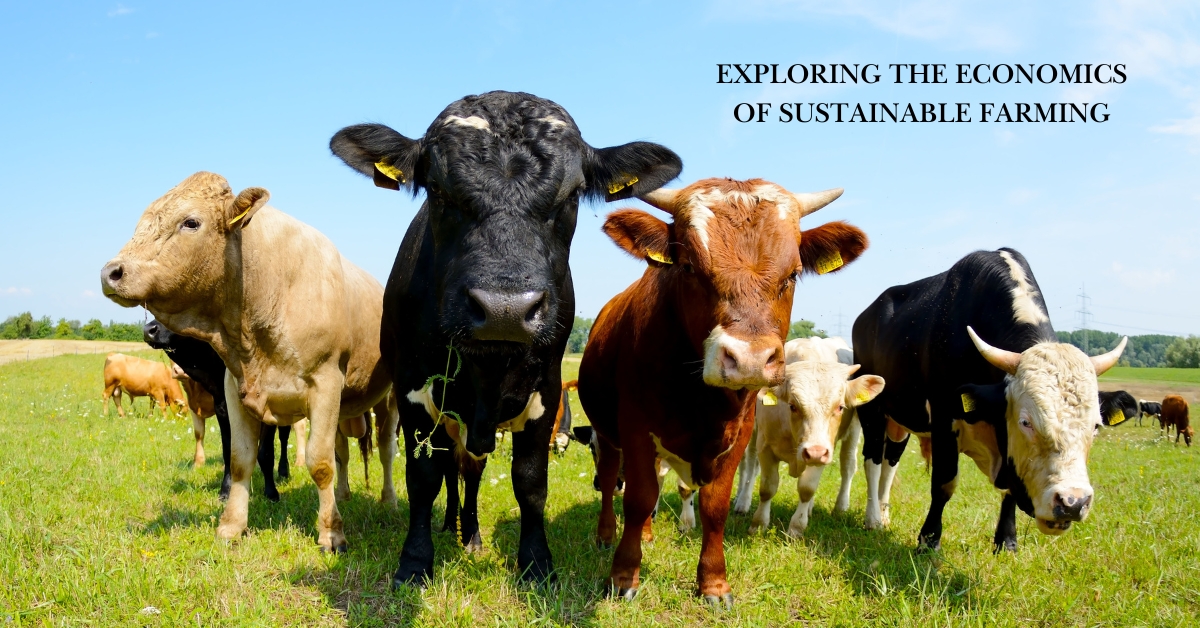The way we produce our food has profound implications for the health of our planet and the well-being of future generations. As concerns about climate change, environmental degradation, and social inequities grow, the need for sustainable food systems becomes increasingly urgent.
Sustainable farming offers a promising path forward, but questions about its economic viability persist. Is sustainable farming truly a cheaper alternative to conventional agriculture?
Sustainable farming can be more costly upfront but offers long-term savings by reducing dependency on synthetic inputs and increasing resource efficiency. However, smaller farms may find it hard to match the low prices of large-scale industrial farms.
This article will explore the multifaceted aspects of the Economics of Sustainable Farming.
Key Takeaways:
- Sustainable farming is a holistic approach that balances environmental, social, and economic considerations, moving beyond the narrow focus on maximizing yields and profits.
- Sustainable farming practices, such as crop rotation, cover cropping, and integrated pest management, can lead to long-term cost savings through reduced reliance on synthetic inputs and improved resource efficiency.
- While sustainable farming often requires higher upfront investments, the premium prices of sustainable produce can help offset these costs, especially for large-scale operations.
- Small sustainable farms face unique economic challenges, including competition from large-scale industrial farms, access to funding and resources, labor shortages, and marketing/distribution obstacles.
- Supportive government policies, as well as consumer choices like buying local and reducing meat consumption, can play a crucial role in creating a more sustainable and economically viable food system.

Defining Sustainable Farming
Sustainable farming represents a holistic approach to food production that aims to balance environmental, social, and economic considerations. It moves beyond the narrow focus on maximizing yields and profits that characterizes conventional agriculture, instead seeking to create farming systems that are:
- Environmentally sound: Protecting natural resources, conserving biodiversity, and minimizing pollution are paramount concerns in sustainable farming.
- Socially responsible: Sustainable farming promotes fair labor practices, supports rural communities, and prioritizes access to nutritious food for all.
- Economically viable: Sustainable farms must generate sufficient income to ensure their long-term operation and the livelihoods of farmers.
The urgency of transitioning to more sustainable farming practices stems from the alarming impacts of conventional agriculture. Industrial farming practices, while undeniably productive, have come at a steep cost to the environment and society. Some key concerns include:
- Greenhouse gas emissions: Food production accounts for a significant portion of global greenhouse gas emissions, contributing to climate change.
- Water depletion and pollution: Agriculture consumes vast amounts of freshwater, and runoff from farms laden with pesticides and fertilizers pollutes waterways.
- Loss of biodiversity: Intensive agriculture practices, such as monocultures and habitat destruction, threaten wildlife populations and reduce biodiversity.
- Social and economic inequalities: Industrial agriculture often relies on exploitative labor practices and displaces small-scale farmers.

Sustainable Farming Practices and Methods
Sustainable farming encompasses a wide array of practices and methods tailored to specific environments and contexts. These practices aim to mimic natural ecosystems, enhance soil health, conserve water, and promote biodiversity. Some commonly employed methods include:
| Practice | Description |
|---|---|
| Crop Rotation | Alternating different crops in the same field over time helps break pest cycles, improve soil fertility, and reduce the need for synthetic fertilizers. |
| Cover Crops | Planting non-cash crops, such as clover or vetch, during fallow periods protects soil from erosion, suppresses weeds, and adds organic matter to the soil. |
| Tillage Reduction | Minimizing or eliminating tilling helps preserve soil structure, reduce erosion, and sequester carbon in the soil. |
| Integrated Pest Management (IPM) | This approach uses a combination of biological controls, cultural practices, and minimal pesticide application to manage pests while minimizing environmental harm. |
| Livestock and Crop Integration | Integrating livestock and crop production allows for the efficient cycling of nutrients, reduces reliance on external inputs, and improves animal welfare. |
| Agroforestry | Incorporating trees into farming systems provides shade, enhances biodiversity, improves soil health, and can generate additional income sources. |
| Whole-Systems Management | Sustainable farming necessitates considering the entire farm ecosystem, including uncultivated areas like riparian buffers and prairie strips, which play crucial roles in protecting water resources and supporting pollinators. |
| Diversification | Embracing diversity in crops, livestock, and farming practices enhances resilience to pests, diseases, and market fluctuations. |
The sources also mention various additional sustainable farming methods, such as aquaponics, hydroponics, and permaculture. These techniques offer innovative approaches to food production that minimize environmental impact and conserve resources.

Economic Considerations of Sustainable Farming
While the environmental and social benefits of sustainable farming are widely recognized, the economic aspects are often debated. Is sustainable farming truly cheaper than conventional agriculture? The answer is complex and depends on various factors, including the specific practices adopted, the scale of operation, and market conditions.
1. Short-term vs. Long-term Costs
Sustainable farming often requires higher upfront investments, such as purchasing specialized equipment or transitioning to organic inputs. However, over the long term, sustainable practices can lead to cost savings through reduced reliance on expensive synthetic inputs, improved soil health, and increased water efficiency.
2. Market Prices
Sustainable produce often commands premium prices in the marketplace, reflecting consumer demand for environmentally and socially responsible products. However, smaller sustainable farms may struggle to compete with the lower prices offered by large-scale industrial farms.
3. Challenges Faced by Small Sustainable Farms
Small sustainable farms face unique economic challenges, including:
- Competition from large-scale industrial farms: The economies of scale enjoyed by large farms can make it difficult for smaller farms to compete on price.
- Access to funding and resources: Small sustainable farms may lack access to capital, land, and technical assistance needed to thrive.
- Labor shortages: Finding and retaining skilled farm labor is a growing challenge, particularly for small farms.
- Marketing and distribution challenges: Connecting with consumers and establishing reliable distribution networks can be daunting tasks for small farms.

Supporting Sustainable Farming
Transitioning towards a more sustainable food system requires collective efforts from policymakers, farmers, and consumers.
1. Role of Policy and Legislation
Government policies and programs, such as the U.S. Farm Bill, can provide financial incentives, research support, and technical assistance to farmers adopting sustainable practices. These initiatives can help address the economic barriers faced by sustainable farmers and create a more level playing field.
2. Consumer Choices
Consumer demand plays a crucial role in shaping the agricultural landscape. By making conscious purchasing decisions, individuals can support sustainable farming by:
- Eating local: Purchasing food from local farmers’ markets, community-supported agriculture (CSA) programs and farm-to-table restaurants supports regional food systems and reduces transportation costs.
- Reducing meat consumption: Animal-based products, particularly red meat, have a significantly higher environmental footprint than plant-based foods. Shifting towards a more plant-centric diet can reduce the demand for environmentally intensive livestock production.
Conclusion
The question of whether sustainable farming is cheaper than conventional agriculture does not have a simple answer. Sustainable farming involves balancing short-term costs with long-term benefits, considering environmental and social impacts alongside economic viability.
While challenges exist, particularly for smaller farms, sustainable practices offer a path towards a more resilient, equitable, and environmentally sound food system.
Through supportive policies, innovative solutions, and informed consumer choices, we can create a future where sustainable farming flourishes, providing nourishment for both people and the planet.
FAQs
1. Is sustainable farming more expensive than conventional agriculture?
The economic viability of sustainable farming is complex and depends on various factors. While sustainable agriculture often requires higher upfront investments, it can lead to long-term cost savings through reduced reliance on expensive synthetic inputs, improved soil health, and increased resource efficiency. The premium prices of sustainable produce can also help offset the higher initial costs, especially for larger-scale operations. However, small sustainable farms may struggle to compete with the lower prices of large-scale industrial farms.
2. What are the key economic benefits of sustainable farming?
The primary economic benefits of sustainable farming include long-term cost savings, the ability to command premium prices for sustainable produce, and the potential for diverse income streams through practices like agroforestry. Sustainable agriculture can also improve resilience to market fluctuations and reduce reliance on expensive external inputs, contributing to the overall economic viability of these farming systems.
3. What do small sustainable farms face the main economic challenges?
Small sustainable farms face several unique economic challenges, including competition from large-scale industrial farms with economies of scale, limited access to funding and resources, labor shortages, and difficulties with marketing and distribution. These obstacles can make it challenging for smaller sustainable farms to achieve the same level of profitability as their larger counterparts.
4. How can policies and consumer choices support the economic viability of sustainable farming?
Government policies, such as financial incentives, research support, and technical assistance, can help address the economic barriers faced by sustainable farmers and create a more level playing field. Additionally, consumer choices like buying local, supporting community-based agriculture, and reducing meat consumption can drive demand for sustainable products and strengthen regional food systems, ultimately supporting the economic viability of sustainable farming.

